Introduction
Background
Hairy tongue (lingua villosa) is a commonly observed condition of defective desquamation of the filiform papillae that results from a variety of precipitating factors. The condition is most frequently referred to as black hairy tongue (lingua villosa nigra); however, hairy tongue may also appear brown, white, green, pink, or any of a variety of hues depending on the specific etiology and secondary factors (eg, use of colored mouthwashes, breath mints, candies).1,2 See the images below:
Brown hairy tongue in a middle-aged woman who drinks coffee. Note how the condition is limited to the mid-dorsal part of the tongue, becoming more prominent toward the posterior part.
This patient is a middle-aged woman who drank coffee and smoked cigarettes for many years. Her chief complaint was a tickling sensation in the oral pharynx during swallowing. The slight greenish cast to her tongue was due to the use of a mouthwash immediately prior to her appointment.
Pathophysiology
Precipitating factors for hairy tongue include poor oral hygiene, the use of medications (especially broad-spectrum antibiotics), and therapeutic radiation of the head and the neck. All cases of hairy tongue are characterized by a hypertrophy and elongation of filiform papillae, with a lack of normal desquamation. Normal filiform papillae are approximately 1 mm in length, whereas filiform papillae in hairy tongue have been measured at more than 15 mm in length.
Frequency
United States
The prevalence of hairy tongue varies widely, from 8.3% in children and young adults to 57% in persons who are addicted to drugs and incarcerated. Hairy tongue has been reported with greater frequency in males, those who use tobacco, those who heavily drink coffee and tea, patients infected with HIV, and those who are HIV negative and use intravenous drugs.
Mortality/Morbidity
Hairy tongue is rarely symptomatic, although overgrowth of Candida albicans may result in glossopyrosis (burning tongue). Patients frequently complain of a tickling sensation in the soft palate and the oral pharynx during swallowing. In more severe cases, patients may actually complain of a gagging sensation. Retention of oral debris between the elongated papillae may result in halitosis.
Race
No racial predilection is associated with hairy tongue.
Sex
Although hairy tongue is reported more often in males, it is not uncommon in females, especially those who drink coffee or tea and/or those who use tobacco.
Age
The incidence and the prevalence of hairy tongue increases with age, possibly because a higher percentage of the population engage in activities (eg, using tobacco, drinking coffee or tea) that predispose to the condition.
Clinical
History
Because hairy tongue is usually asymptomatic, the history is often irrelevant.
- In most cases, lesions are noted as part of an intraoral examination, although patients may complain of a tickling or gagging sensation.
- Most patients with hairy tongue have a positive history of coffee or tea drinking, often in addition to tobacco use.
- Although hairy tongue has been reported with increasing prevalence in persons who are HIV positive and in persons who are HIV negative and use intravenous drugs, it is not considered to be of any diagnostic or predictive value and probably represents a manifestation of social habits (eg, using tobacco, drinking coffee or tea).
- Patients occasionally notice the condition of the tongue during tooth brushing and present to the office with concerns regarding potential malignancy.
- See the images below:
Physical
- Hairy tongue clinically appears as an elongation of the filiform papillae on the dorsal surface of the tongue.
- Papillae, which are normally minimally keratinized and appear pinkish white, often retain pigments from food, beverages, and candies, resulting in the varying colors associated with the condition (eg, black, brown, white, green, pink). The tongue has a thick coating in the middle, with a greater accentuation toward the back.
- Bacterial and fungal overgrowth play a role in the color of the tongue.
- In extreme cases of hairy tongue, a blast of compressed air results in the papillae "waving in the breeze."
Causes
- The basic defect in hairy tongue is a hypertrophy of filiform papillae on the dorsal surface of the tongue, usually due to a lack of mechanical stimulation and debridement. This condition often occurs in individuals with poor oral hygiene (eg, lack of tooth brushing, eating a soft diet with no roughage that would otherwise mechanically debride the dorsal surface of the tongue).
- Contributory factors for hairy tongue are numerous and include tobacco use and coffee or tea drinking. These factors account for the various colors associated with the condition.3,4
More on Hairy Tongue |
 Overview: Hairy Tongue Overview: Hairy Tongue |
| Differential Diagnoses & Workup: Hairy Tongue |
| Treatment & Medication: Hairy Tongue |
| Follow-up: Hairy Tongue |
| Multimedia: Hairy Tongue |
| References |
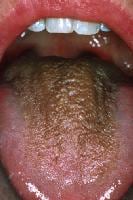
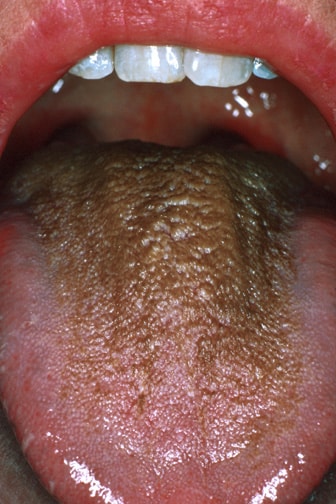
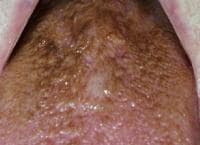
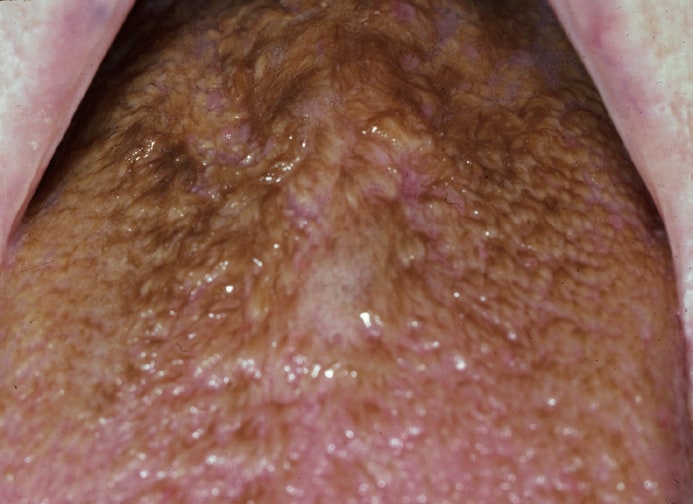
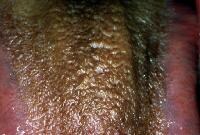
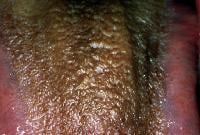
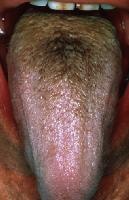
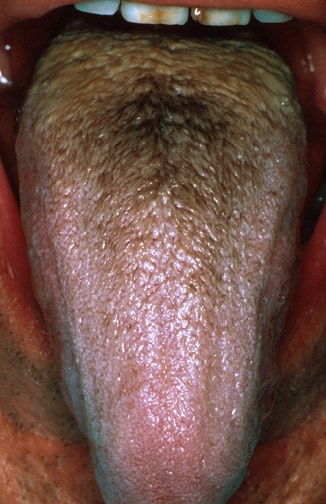
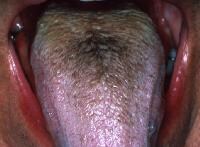
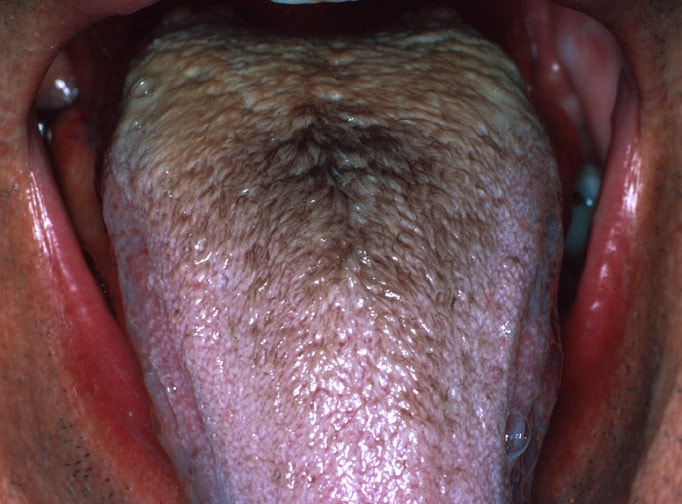

Không có nhận xét nào:
Đăng nhận xét